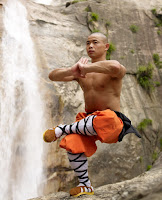The benefits of regular mediation have been talked about for centuries. A regular practice can help reduce stress/anxiety, improve mental clarity/focus, and maintain cognitive function into later years. It's no secret that some form of meditation would be a great addition to most people's daily routine! Lucky for you, there's no shortage of methods to choose from. You only need to do some research or take a class, practice it often, and see if it's right for you. Simple, easy, and in most cases won't break the bank!
Meditation can come in many forms and styles. Popular ones include guided meditation, mindful meditation (popularized by Shaolin Monks), and transcendental mediation (popularized by Hindu Yogi's). Most of these methods involve sitting, kneeling, or laying down in a calm space of your choosing. Their focus can range from channeling your attention on one word/phrase, simply observing your thoughts as they pass though your mind, or even clearing the mind. Not every method of mediation is right for everyone, the one that works for you will be unique to your personality type.
That being said, these calm methods of meditation don't always jive with every ones personality.
Yes, it takes practice to learn how to sit still and adapt to your meditation practice. It would be worth giving a calm practice a try for a while before you decide if working or not. But what if you've been trying for a while and it's just- not- working? Don't worry, there's another way to get that meditation done without sitting still.
Moving Meditation
The mind and the body are "one", in my opinion for them to function at a high level they must be trained together. This is why I often opt for moving forms of meditation in my daily life instead of tradition calm methods. We've all felt the calm/high state felt after a quality workout, it's almost zen like, and people have known about this forever! This isn't a new phenomenon, we can see many examples of this "moving meditation" throughout history.
Shaolin Warrior Monks have practiced this for centuries through Qi Gong. Their practice of Qi Gong allowed them to connect their breath, mind, and movement together in one action; improving the well being physical body as well as their mind. Samurai would train with laser focus on improving sword techniques, hand to hand combat, and even art. Their single minded purpose/focus through their physical practice allowed them to reach a high level of zen; even without sitting for hours each week meditating. It's quite obvious that Yoga is a powerful form of moving meditation! Do I even need to go into more detail on that ... I didn't think so!
Even though they're all fun, you don't need to specifically practice Qi Gong, Kendo, or Yoga to work on moving mediation. It can be as simple as taking a long walk and simply observing your surroundings, calming the mind, and allowing you to recharge. You can also get a quality moving meditation practice through your own training program! Today I'm going to outline my favourite method of moving meditation, achieved through minimalist training.
Moving Meditation Workout
The method I'm about to describe is simple, after all, I'm all about bodyweight and minimalist approach to training! You won't need much equipment, just a pull up bar or a suspension trainer/gymnastics rings and your own bodyweight. The goal during this workout is to not count your reps. You can throw the rep counting out the window! I want you to only focus on your form and your breathing. You need to be mindful about the exercise you're performing, focusing only on that movement at that time. It's a high intensity method that will produce a deep level of muscular fatigue, push your heart rate up, and get you breathing hard. Trust me, it's a great workout that will build that "zen" state we talked about earlier. Here's how to put it together ...
- Choose a variation for each exercise that you can complete at least 10 reps.
- Perform the exercises back to back, in the order listed, with 15 seconds of rest between exercises
- Perform each exercise at a pace of 4 seconds up and 4 seconds down, with a 1 second pause at the top and bottom of the movement.
- Perform as many reps as you can possibly complete with perfect form, at the tempo described!
- Once the form as broken down, or you can no longer move at the temp described, move onto the next exercise.
- Once you completed all the exercises, rest for 1-2 mins and repeat the whole "circuit" again 1-2 more times depending on your fitness level.
1.) Bodyweight Row or Chin Up/Pull Up variation
2.) Push Up variation
3.) Squat variation
Give this a try and I'm sure you'll find it produces a great calming effect, not only for the body but also the mind.
- Tim


















